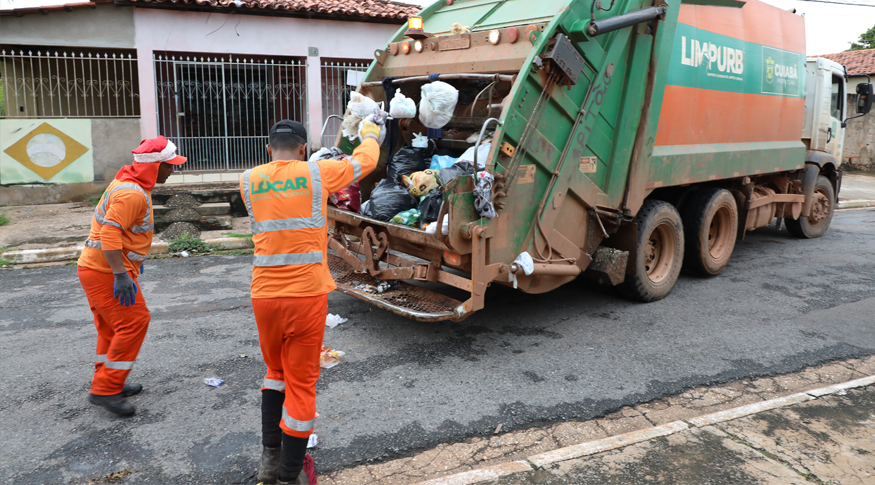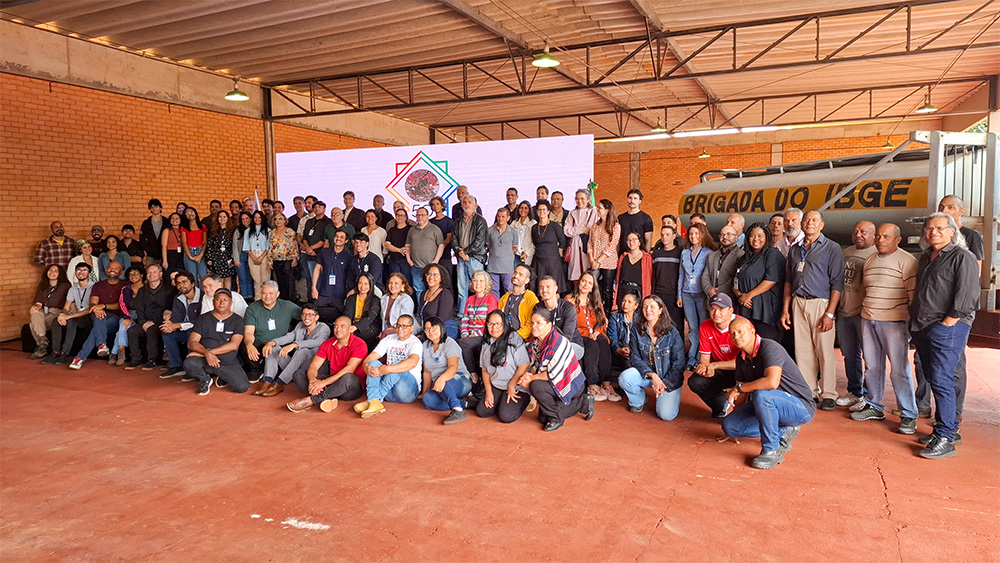Continuous PNAD
In 2024, waste collection reaches 93% of housing units, but 4.7 million still burn waste
August 22, 2025 10h00 AM | Last Updated: August 25, 2025 02h04 PM
Highlights
- Direct waste collection reached 86.9% of the country's 77.3 million housing units in 2024, showing increase in collection coverage since 2016, when it had reached 82.7%.
- In rural areas, the proportion of housing units with direct waste collection reaches only 33.1% of the 8.9 million housing units in these areas, while it is available in 93.9% of the 68.5 million urban housing units.
- Despite the gradual increase in direct waste collection in recent years, approximately 4.7 million housing units (6.1%) still burned their waste in their homes in 2024. In rural areas, waste burning occurs in more than half (50.5%) of the properties. In urban areas, this proportion is only 0.4%.
- Regarding sewage disposal, only 9.4% of rural housing units had sewage disposal through the general sewer network or septic tank connected to the general sewer network in 2024. This proportion reached 78.1% in urban areas. Across the country, this indicator increased from 68.1% in 2019 to 70.4% in 2024.
- Other types of sewage disposal were estimated at 14.4% of housing units nationwide in 2024, indicating that 11.1 million housing units dispose of their waste in rudimentary septic tanks, ditches, rivers, lakes, or the sea. In rural areas, more than half (53.8%) use other types of sewage disposal, while this figure reaches 9.5% of urban housing units.
- Among rural housing units, 31.7% are served predominantly by the general water network. In urban areas, this proportion reaches 93.4%. In Brazil, housing units with access to the general water supply network accounted for 86.3% of the total in 2024, compared to 85.8% in 2016.
- Access to electricity reached 99.8% of the country's housing units in 2024, either via the general network or an alternative source.
- The number of rented housing units increased from 12.3 million in 2016 to 17.8 million in 2024, a rise of 45.4%. During the same period, there was a continuous reduction in the proportion of already paid-off owned housing units, from 66.8% to 61.6%, indicating a concentration of wealth.
- In 2024, the share of the population under 30 was 41.9%, and that of those over 60 was 16.1%, demonstrating a trend toward population aging.
- The proportion of single-person housing units, that is, those consisting of only one resident, increased, from 12.2% in 2012 to 18.6% in 2024, an increase of 6.4 pp.
- In 2024, 57.2% of men in single-person arrangements were aged 30 to 59, and among women, 55.5% were aged 60 or older.

In 2024, 93.1% of housing units had their waste collected, either directly from the property (86.9%) or in dumpsters (6.2%). Direct waste collection stood out for its increased coverage since 2016, when it had reached 82.7%. The Northeast saw the largest increase in this indicator, rising from 67.5% to 78.4% in the same period, despite having the lowest coverage among the Major Regions. In rural areas, the proportion of housing units with direct waste collection was 33.1%, while in urban areas it reached 93.9% of housing units.
Despite the gradual increase in direct collection in recent years, approximately 4.7 million housing units (6.1%) still burned their own waste in 2024. The North and Northeast regions have 14.4% and 13.1% of housing units burning waste, respectively, the highest proportions among the Major Regions, totaling 3.5 million units. However, waste burning has decreased compared to 2016, when it reached 18.6% of housing units in the North and 17.2% in the Northeast.
In rural areas, waste burning is practiced on more than half (50.5%) of properties, followed by direct collection (33.1%) and dumpster collection (11.7%).
The information is from the General Characteristics of Housing Units and Residents module of the Continuous National Household Sample Survey (PNAD), released today (22) by the IBGE. This is the first annual release after data reweighting based on the 2022 Census. The data is also available on Sidra.
Survey analyst William Kratochwill highlights the high percentage of housing units burning waste on properties without direct collection by the public service. "This is still a worrying figure, resulting in increased pollution and even insalubrity in rural areas, as waste should be accumulated somehow before it is burned."
Regarding rural areas, the Continuous PNAD (National Household Survey) shows that only 9.4% of housing units had sewage disposal through the general sewage system or a septic tank connected to the general sewage system in 2024, while this proportion reached 78.1% in urban areas. For all housing units in the country, this indicator increased from 68.1% in 2019 to 70.4% in 2024.
Mr. Kratochwill explains that coverage of some basic sanitation services is feasible in rural areas when located near urban centers. "In more isolated or sparsely populated areas, it may be necessary to install septic tanks not connected to the sewer network and use artesian wells for water supply," he explains.
Among rural housing units in the country in 2024, 36.8% (3.2 million) had a septic tank not connected to the network, while 53.8% (4.6 million) used another type of sewage system, such as a rudimentary cesspit not connected to the network, ditches, or direct drainage into rivers. In urban areas, these waste disposal methods are used by 12.4% (8.5 million) and 9.5% (6.5 million), respectively, of housing units.
The lowest estimates of access to the general sewage network were in the North, Northeast, and Central-West regions. However, these Major Regions saw the greatest growth between 2019 and 2024, rising from 27.2% to 31.2%, 46.7% to 51.1%, and 59.5% to 63.8%, respectively. The Southeast reached 90.2%, while the South reached 70.2%.
According to Mr. Kratochwill, the lower coverage of access to the general sewage network in regions like the North and Northeast, which have a higher proportion of rural housing units, is due to the cost of implementing the service. "Creating this structure is time-consuming and expensive, so rural areas, being remote and dispersed, make implementation more complex. This is one reason why rural areas lack access to both the general sewage and water networks," he explains.
Another type of sewage system was estimated to account for 14.4% of Brazilian housing units in 2024, indicating that 11.1 million units disposed of their waste in a septic tank, ditch, river, lake, or sea. This proportion was highest in the North (36.4%), with 2.1 million housing units in this situation, exceeding the estimate for those that disposed of their waste in the general sewage system (24.7%). The Northeast also has a high percentage of another type of sewage system (25.1%), corresponding to five million housing units, while the Southeast has the lowest proportion (5.6%), with 1.9 million housing units disposing of their waste in this way.
One out of three rural housing units is supplied by the general water supply network
In 2024, 86.3% of housing units (66.7 million) had access to the general water supply network, compared to 85.8% in 2016. Of those with access, water availability was daily for 88.4%, four to six times a week for 5.0%, and one to three times a week for 4.6%. The use of deep or artesian wells (7.5%), shallow, groundwater, or wells (2.7%), springs (1.8%), and other sources (1.7%) were less frequent sources of water supply.
Among the 8.9 million rural housing units, only 31.7% are supplied predominantly by the general water supply network, equivalent to one out of three housing units. Most rural housing units use other sources of water supply: 30.8% use deep or artesian wells; 12.9% use a shallow well, groundwater well, or well; 13.3% use springs; and 11.2% are supplied primarily by other sources, including rivers, reservoirs, and water trucks.
Among the 68.5 million housing units in urban areas, 93.4% have the main water supply network as their primary source. This proportion is 70.8% in the urban area of the North, the only Major Region with a water supply below 90%. In the Southeast, it reaches 96.6%.
Regionally, for all housing units, water supply via the main water supply network varies from 61.7% in the North to 92.5% in the Southeast. The Northeast Region (72.6%) has the lowest daily water supply coverage, while the South (95.8%) has the highest. The North Region has the highest percentage of housing units whose primary water source is a deep or artesian well (22.0%), or a shallow, groundwater, or well (11.2%). The Northeast, in turn, has the highest percentage of housing units using another source of water (5.2%), with the national average being 1.7% for this type of water supply.
Electricity distribution reaches nearly all housing units
Access to electricity reached 99.8% of the country's 77.3 million housing units in 2024, either via the general network (grid) or alternative sources. This high percentage ranged from 99.4% in the North Region, reaching 99.7% in the Northeast, and 99.9% in the Southeast, South, and Central-West.
Electricity comes from the grid in 99.3% of all housing units, with 98.4% having full-time access. Among the major regions, the proportion of homes with full-time power is 98.6% in the Southeast; 98.5% in the South; 98.4% in the Northeast; 98.1% in the Central-West; and 97.8% in the North.
Housing units in urban and rural areas also have high electricity coverage, at 99.9% and 99.2%, respectively. However, the percentage of rural housing units with electricity from the general grid was lower (97.4%), particularly in the North (85.2%). In this region, considering the general grid and alternative sources, 97.1% of rural housing units had access to electricity, demonstrating the importance of alternative sources as the sole source of this service for the population in these areas.
Proportion of housing units with masonry or coated rammed earth walls grows 2% in one year
Of the total number of housing units in the country in 2024, 89.3% (69 million) have masonry/rammed earth exterior walls with cladding. This percentage represents a 2.0% increase compared to 2023 and a 17.4% increase compared to 2016, a higher increase than the overall number of housing units in the country, which was 15.9%. This proportion ranged from 71.2% in the North to 94% in the Southeast. The Southeast region saw a decrease in the proportion of housing units in this category, falling from 95.2% to 94%.
The North is the Major Region with the lowest proportion of housing units with masonry or rammed earth walls with cladding, but it showed the greatest growth. "This upward trend can be explained by the fact that it is a region with more room to expand given its smaller use of the material. Furthermore, it may be related to the increase in per capita household income itself," claims the survey analyst.
The other categories represented: 0.4% (309,000) other materials, such as wood salvaged from siding and packaging; 6.7% (5.2 million) masonry/rammed earth without cladding; and 3.6% (2.8 million) wood suitable for construction.
Eight out of 10 housing units have ceramic, tile, or stone floors
In 2024, ceramic, tile, or stone floors were used in 82.3% (63.6 million) of housing units, predominating in all Major Regions: from 69.3% in the North to 89.4% in the Central-West. In 11.5% (8.9 million) of housing units, the flooring was cement, while in 5.7% (4.4 million), it was wood suitable for construction. Other materials, including wood salvaged from packaging, siding, or scaffolding, were used in 0.5% (395,000) of homes.
Nearly half of the housing units have tile roofs without a concrete slab
Approximately 49.3% (38.1 million) of housing units had tile roofs without a concrete slab in 2024. Meanwhile, 32.8% (25.3 million) had tile roofs with a concrete slab, 15.2% (11.7 million) had only a concrete slab, and 2.7% (2.1 million) used another material. Compared to 2016, the percentage of housing units with tile roofs without a concrete slab decreased (from 52.0% to 49.3%) and the proportion of those with tile roofs with a concrete slab increased (from 31.8% to 32.8%).
Number of rented housing units increased by 5.6 million from 2016 to 2024
In 2024, 23.0% of all housing units in the country were rented. The number of rented housing units increased from 12.3 million in 2016 to 17.8 million in 2024, a 45.4% increase (5.6 million more). Almost half (2.6 million) of this increase in the total number of rented housing units occurred from 2022 to 2024. Compared to 2023, the increase was 5.3% (896,000 housing units), and from 2022 to 2023, it was 11% (1.7 million).
The majority of housing units, 61.6% (47.7 million), were self-owned and already paid off, and 6.0% (4.7 million) were self-owned but still being paid for. From 2016 to 2024, there was a continuous reduction in the number of self-owned housing units, particularly among those already paid off (66.8% in 2016). "This 5.2 percentage point reduction over the years in homeownership, combined with the increase in rented homes, indicates a concentration of wealth during this period. If opportunities for the population to buy their own property are not created, people will have to resort to renting. Meanwhile, the economy is also experiencing a very long period of inflation and reduced wages, which creates more difficulties for people to leverage their assets," claims the analyst.
The North (70.0%) and Northeast (69.6%) Regions recorded the highest estimates of homeownership already paid for in 2024, despite a reduction since 2016, when they were 74.2% and 73.1%, respectively. The Central-West (30.8%), Southeast (25.4%), and South (23.0%) regions had the highest percentages of rented homes. In the Central-West Region, rented properties also stood out, representing 10.7% of the region's housing units.
Motorcycle ownership surpasses car ownership in the North and Northeast Regions
Across the country, almost half (48.8%) of housing units have a car; 25.7% a motorcycle; and 13.4%, both. The South has the highest percentage of car ownership (69%). The Northeast and North Regions have the lowest proportions of this asset (28.8% and 29.7%, respectively), and are the only Major Regions where motorcycle ownership (37.9% and 33.5%, respectively) surpassed car ownership. The Southeast Region has the lowest proportion of housing units with motorcycles (19.4%), while the Central-West region has the highest percentage of housing units with both assets (18.7%).
The Continuous PNAD also reveals that 98.3% of housing units have a refrigerator, a percentage that varied between 93.9% in the North and 99.4% in the South. With coverage well below that, washing machines are present in 70.4% of housing units, with marked regional differences: the Northeast (40.5%) and North (55.4%) have the lowest percentages, while the South (90.0%), Southeast (82.3%), and Central-West (81.5%) have the highest.
Compared to 2016, the North and Central-West Regions saw the largest increases in the proportion of households with washing machines, 14.4 percentage points and 14.6 percentage points, respectively.
"When a family starts to earn more, they seek greater well-being. A washing machine is an item that makes a family's life much easier for obvious reasons. Vehicles also provide this increased well-being, the possibility of going on trips and tourism," claims Mr. Kratochwill.
Elderly proportion continues to grow, reaching 11.2% of the population
The distribution of the population by age group shows an aging trend. In 2012, the population under 30 years of age represented 49.9% of the total, rising to 41.9% in 2024. The population aged 30 and over grew between 2012 and 2024, rising from 50.1% to 58.1%. Among the elderly, the expansion of the share of persons aged 65 and over stands out, reaching 11.2% of the total population in 2024.
"Among the population under 30, the share of persons aged 5 to 13 years old dropped from 14.6% to 12.3%, and of persons aged 14 to 17 years old dropped from 7.1% to 5.6%," explains Mr. Kratochwill. "Between 2012 and 2024, the population under 30 years old not only saw a reduction in its share of the total population, but also a 9.4% reduction in its population, falling from 98.2 million to 89.0 million persons."
In 2024, women accounted for 51.2% of Brazil's population, while men accounted for 48.8%. In all Major Regions, there are more women than men.
The sex ratio indicates that there are 95.2 men for every 100 women in Brazil. The concentration of men was highest in the North Region, with 99.3 men for every 100 women, while the Northeast (93.0) and Southeast (94.9) regions had the lowest sex ratios. "Among the factors that can influence the regional differences in this indicator are migration flows and the different mortality patterns between Major Regions," comments mr. Kratochwill.
The male population shows a younger pattern than the female population. In 2024, for all age groups up to 24 years old, men's estimates are higher than women's. In the 25-29 age group, the proportions of men and women were very close, representing approximately 3.9% of the total population. From 30 onward, however, the percentage of women was higher than that of men in all age groups.
Because male mortality is higher than female mortality in each age group, there is a greater concentration of women among the elderly population. The sex ratio calculated for the population aged 60 and over was 78.9 men per 100 women, and for those aged 70 and over, it was 72.3.
From 2012 to 2024, the percentage of white persons declined in all regions
Between 2012 and 2024, the percentage of the population who self-identified as white fell by 4.3 percentage points (pp), from 46.4% in 2012 to 42.1% in 2024, the lowest percentage in the series. The proportion of self-identified black persons increased from 7.4% in 2012 to 10.7% in 2024, a difference of 0.1 percentage points compared to 2023. Regarding brown skin color or race, there was little change compared to 2012, from 45.5% to 46.1%.
The share of the self-declared white population decreased in all Major Regions from 2012 to 2024, with a notable decrease in the South (-7.4 percentage points). The Northeast Region saw the largest increase in the share of self-identified black persons (4.7 percentage points).
Southeast has the highest proportion of single-person households
In 2024, the most common household arrangement was that of the nuclear family, which accounted for 65.7% of all households, but it decreased compared to 2012 (68.4%). The nuclear arrangement consists of a single household formed by the couple, with or without children (including adopted and foster children) or stepchildren. Domestic units composed of a mother and children or a father and children, also known as single-parent households, are also nuclear.
The extended household, consisting of the head of household with at least one relative, forming a family that does not fall into one of the types described as nuclear, accounted for 14.5% in 2024, a decrease of 3.4 percentage points compared to 2012.
Single-person households, that is, those consisting of only one resident, grew during the period, rising from 12.2% to 18.6%, an increase of 6.4 percentage points. The Southeast and Central-West Regions had the highest percentages of single-resident households (19.6% and 19.0%, respectively), while the North Region had the lowest proportion (15.2%).
"In large urban centers, it's more common for people to migrate for professional reasons. They first move in and live alone, to adjust to a new job, and only later do they bring their family. Rio de Janeiro, São Paulo, and Minas Gerais are attractive states for the workforce because they are larger centers," explains Mr. Kratochwill.
When analyzing the age pattern of persons in single-person arrangements, 12.5% were aged between 15 and 29 years old; 47.0% were between 30 and 59 years old; and 40.5% were 60 years old and older.
Women accounted for 44.9% of persons living alone in 2024, while men accounted for 55.1%. There are marked differences between men and women living alone in terms of age profile: 57.2% of men in single-person arrangements were between 30 and 59 years old, followed by those aged 60 years old and older (28.2%); Among women, the majority were aged 60 and older (55.5%).
"The profile of single-person households is also made up of persons at the end of their life cycle, mostly women, whose children have left home to start their own families, or whose partners have already passed away," says Mr. Kratochwill.
More about the survey
The Continuous PNAD: General Characteristics of Housing Units and Residents gathers information on the type and condition of occupancy, predominant wall, floor, and roof materials, basic sanitation and electricity services, and property ownership, all of which are data related to the characteristics of housing units.
The resident characteristics include information on population distribution, sex and age groups, race, and household units (household arrangements). The data are disaggregated for Brazil, Major Regions, Federation Units, Metropolitan Areas, and capital cities.




















